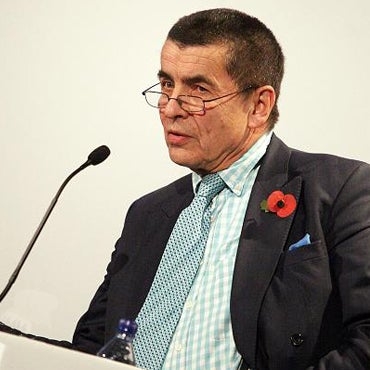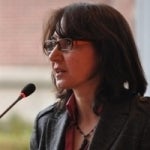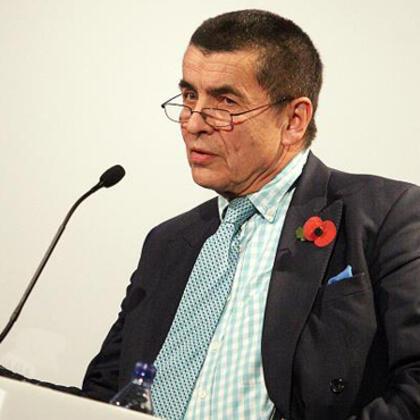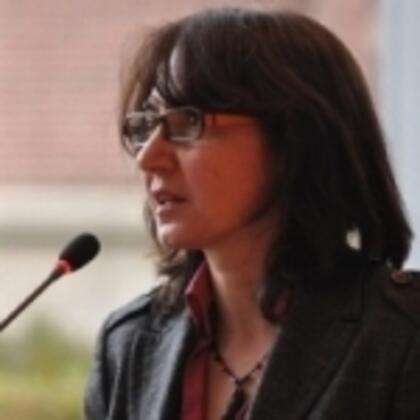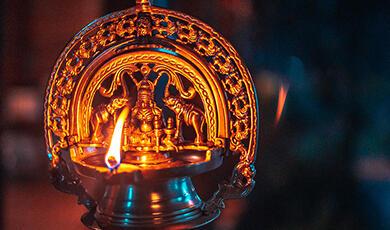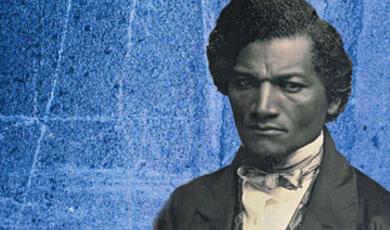The Iran Tribunal
Share
- Details
- Text
- Audio
- Downloads
- Extra Reading
Many innocent Iranians suffered terrible atrocities and death in the regime of the Ayatollahs in the 1980s. The UN failed to record the crimes in a formal way at any court or tribunal. Groups from around the world established an informal tribunal that prepared a report in 2013, publicly condemning the Iranian regime of grave crimes. Work of this tribunal provides a further example of how citizens dissatisfied with the performance of international institutions can deal with difficult problems in faraway places.
At this lecture there were accounts of the nature of the torturing of individuals with a contribution from an imprisoned victim explaining how it was possible to maintain sanity and to survive in circumstances where many would succumb.
Download Text
13 November 2013 The Iran Tribunal Professor Sir Geoffrey Nice QC The informal Iran Tribunal dealt with the atrocities of the regime of the Ayatollahs in the 1980’s. In the absence of the UN being prepared to do anything to record the crimes in a formal way, Diaspora from around the world worked together to established an informal tribunal that prepared an authoritative report in 2013 condemning the Iranian regime concerned. As a case study the work of this tribunal provides many lessons for the citizen who is dissatisfied with the performance of bodies that may be reluctant to deal with politically difficult problems in faraway places. At this lecture there will be accounts of the nature of the torturing of individuals with a contribution from an imprisoned victim explaining how it was possible to maintain sanity and to survive in circumstances where many would succumb. Gresham law lectures typically attract smaller audiences than those about astronomy or music and most other subjects. And hardly surprising. Were I to be given the chance of learning something about music or something about astronomy or something about law, I would choose against the law! Music and astronomy tell us something about the essence of who we are. Law deals with the rules humans introduce to contain and control some of what we are. But when the law fails the citizen – or when it seems not to exist at all – then we are turned back on ourselves and to more interesting questions about our very essence as well as about the nature of law. My lectures to date have asked how far the law can invade the arena of armed conflicts and whether law and the findings of legal and quasi legal bodies about conflicts have much real long term value? Informal tribunals are filling an important role in modern society, most commonly when the law has failed the citizen. But having no real power these tribunals ultimately confront the citizen with her / his inability to activate law without the engagement of national or international systems. They rely on the law that countries, and bodies like the UN, can use and operate in formal legal systems. But in some ways, because they lack the ability to compel compliance with the law, these tribunals resemble political or social campaigns. Does that make them valueless? They say they follow universal law that should be respected and applied and the modern structure of International Humanitarian Law, that incorporates Customary Law, allows them to say just that. Despite that, as the use of law in all international tribunals shows law remains a political tool. Does that limit informal tribunals to being, political or social campaigns, having effect on public opinion, if at all? The conclusions of Lord Russell’s tribunal into Vietnam were not at all unrealistic but of limited effect. Ask your American friends how they would characterize the US involvement in Vietnam, Cambodia, Laos etc and they are unlikely to say ‘war crimes’. Had there been a formal international court making the same findings the position would inevitably be different – yet the Russell conclusions may be broadly fair. The Russell Tribunal may not have achieved that much – yet – by way of lasting legacy. Must this be the same for all such tribunals, even in the formation of public opinion? The tribunal that considered the Japanese ‘Comfort Women’ – formally the Women's International War Crimes Tribunal 2000 for the Trial of Japanese Military Sexual Slavery – is the first of two informal tribunals for consideration in this lecture. It dealt with events earlier than the Vietnam War but was formed after the Russell Tribunal. It set itself a task that reflected what was seen as failings of the Japanese state and the international community. We now know with certainty what the ‘Comfort Women’ suffered and, in a very short survey, can put things in chronological order: Japan sought domination of the Asia Pacific region and perpetrated appalling atrocities on populations it sought to subjugate. In 1932 Japan set up military controlled ‘comfort houses / stations’ in Shanghai. These were places for the military to have sexual pleasure. In 1937 Japan’s taking of Nanking in what is notoriously referred to as the "Rape of Nanking" marked the beginning of the systematic establishment of military ‘comfort stations’ in China and elsewhere. As many as 200,000 women, from Japan, Korea and China, the Philippines, Burma, the Dutch East Indies, Netherlands, and Australia were forced to engage in sexual activity in Japanese controlled territories in Manchuria, Taiwan, Borneo, The Philippines, Singapore, Burma, Indonesia and Korea as well as in Japan. The practice was so widespread that the way it worked could not be hidden and had to be documented. The ‘Comfort Houses’ were not commercial brothels. They institutionalised serial rape, not prostitution. The Japanese Army's involvement is documented in the government's own files. There was a belief that sex before combat was a ‘charm against injury’. It provided relief for soldiers from combat. By having government run sex stations sexually transmitted disease could be controlled and reputational damage of the military raping local women could be reduced. There were some prostitutes who chose to work for the government and some young women who were sold into the work, but demand outstripped supply and led to abduction of women who were forced into their work. The Japanese military Administration in a document of 4 March 1938 specifically acknowledged the sensitivity required in the ‘rounding up’ of comfort women. Once rounded up the women could be required to serve 60 to 70 men a day and the soldiers sometimes killed and commonly beat, stabbed and in other ways harmed the women who the authorities kept from suicide by threatening to injure their families if they killed themselves. After a time private operators became involved under military oversight and control, dealing with medical inspection as well as with the fees to be paid by the soldiers for sex. As one veteran soldier Yasuji Kaneko admitted much later to The Washington Post the women "cried out, but it didn't matter to us whether the women lived or died. We were the emperor's soldiers. Whether in military brothels or in the villages, we raped without reluctance." This ended only with defeat in WWII and even then some women were made to commit suicide with the soldiers who wished to avoid capture. The Japanese Military trials - the International Criminal Tribunal for the Far East (IMTFE) were organised by US General McArthur. They were more controversial than the Nuremberg trials, not least for McArthur’s absolute determination to keep the Emperor from the dock. Verdicts were not unanimous. The Tribunal had ample evidence of rape and sexual slavery in the so called ‘comfort system’ but did not prosecute for it. That is now seen as an unacceptable, discriminatory disgrace of lawyers, judges, politicians and McArthur himself. After the war there was no effort made by any country on behalf of its nationals to seek redress and the oriental culture meant the women kept quiet . Japan barely showed recognition of any law other than the law of self-preservation or, as described in some denials to come, honour. The latter a possible disguise for the former. The law never broke through the medium of individuals, save for exceptions like Yasuji Kaneko to bring confession in the same way as it seemed never to have broken through to stop the military having what they wanted. As so often where there are mighty forces at work – the Japanese military and government - it is as if the law did not exist. In 1948 there was a trial by a Dutch military court in Batavia Indonesia of Japanese military personnel who forced about 35 Dutch women to become Comfort Women. Four officers were convicted and one sentenced to death (one other committed suicide). The identity of victims and perpetrators was supposed to be kept secret until 2025 but escape into the public domain in 1992. In 1971 a Japanese woman did publish an account of being a former "comfort woman", forced to work for showa soldiers in Taiwan under the pseudonym of Suzuko Shirota. In June 1990, 42 years after the end of WWII, under slowly emerging pressure, the Japanese Government announced that the Comfort Women were the work of neither the Japanese government nor the military, but rather that of private entrepreneurs. In October and November 1990 an open letter to the Japanese Government was sent by the Korean Women's Association (an NGO), demanding an apology, a memorial and a thorough inquiry. The Japanese Government replied to the Korean letter, stating that there is no evidence of the forced drafting of Korean women as Comfort Women, and thus there is no question of any apology, memorial or disclosures by the Japanese Government. The Japanese government again stated that Comfort Women were voluntary prostitutes. In 1991 Kim Hak-soon, a former Comfort Woman in the Republic of Korea, testified in public that she had been forcibly taken as a Comfort Woman by the Japanese military. Mr. Watanabe, Press Director of Japan’s Ministry of Foreign Affairs, stated on Television that evidence was insufficient to warrant an investigation. A lawsuit was filed by Kim Hak-soon and others against Japan, in the Tokyo District Court, for damages and other compensation. In 1992 The "Asahi Shimbun" published the Japanese archive documents obtained by Professor Yoshimi, a well known Japanese historian and researcher, establishing the direct role of the Japanese military in maintaining a huge network of military brothels known as 'Comfort Houses'. Chief Cabinet Secretary Kato admitted for the first time that the Japanese Imperial Army was in some way involved in running military brothels. The UN, where the issue was raised, did little. The Japanese Government released 127 documents admitting the involvement of the Japanese military in organizing military brothels. In December 1992 an international public hearing was held in Tokyo. Former Comfort Women and forced labourers testified about their experiences. International law experts met to discuss the relevant international legal issues. And in 1993 The Comfort Women issue was once again raised at the United Nations Commission on Human Rights and at the United Nations Working Group on Contemporary Forms of Slavery. The Japanese Government once again repeated its stand that all claims have been settled under bilateral treaties and that Japan was not required legally to pay compensation to individual victims. Eventually The Japanese Government issued a carefully-worded statement admitting an unspecified role in the military brothels, yet rejecting legal responsibility for them. Japan continued to contend the brothels were a "system" and not a war crime nor crime against humanity. In 1994 The United Nations Commission of Human Rights appointed Ms Radhika Coomaraswamy as Special Rapporteur on Violence Against Women, with a special brief to investigate crimes against Comfort Women. In 1995 The Japan Federation of Bar Associations (Japan's professional association for attorneys) concluded that the "Comfort Women system was created and administered by the Japanese State and Imperial Army and implemented by related authorities" and that "immediately after the war the Japanese government issued orders to destroy or burn all evidence…on Comfort Women." The Bar Association recommended that the Japanese government pay individual compensation and take other measures. The Japan Times reported that the Justice Ministry was "hiding war crime records" concerning comfort women. The Ministry stated that in order to protect the privacy of convicted war criminals, it would refuse to release records of public trials of persons accused of crimes against Comfort Women. Japanese Prime Minister Murayama offered what the Washington Post described as "a near apology" for wartime atrocities against China, Korea, and other Asian nations. United Nations' Fourth World Conference on Women in Beijing adopted resolution supporting Comfort Women, despite intense lobbying effort by Japanese government representatives. July 1995 The Japanese Prime Minister Tomiichi Murayama offered formal personal apologies to Comfort Women. 1996 The United Nations Commission on Human Rights, bowing to intense pressure from Japanese representatives, adopted a "compromise" resolution that "takes note" of the Coomaraswamy report. Observers from NGOs contended that the resolution was calculated to evade Japanese state responsibility for war crimes and crimes against humanity. 1998, in his surprisingly sharp ruling, Yamaguchi District Court Judge Hideaki Chikashita awarded the former military comfort women the equivalent of $2,300 each. And so the Tribunal came into being, following some years of work by its International Organising Committee and having raised significant funds. Its judges were leading jurists whose work would have to be respected. It was fully confident in what it did, claiming its authority in this way.
This is a People's Tribunal, a Tribunal conceived and established by the voices of global civil society. The authority for this Tribunal comes not from a state or intergovernmental organisation but from the peoples of the Asia - Pacific region, and indeed, the peoples of the world to whom Japan owes a duty under international law to render account. Further, this Tribunal steps into the lacuna left by states and does not purport to replace their role in the legal process. The power of the Tribunal, like so many human rights initiatives, lies in its capacity to examine the evidence, develop an accurate historical record, and apply principles of international law to the facts as found. The Tribunal calls upon the government of Japan to realise that the greatest shame lies not in this recording of the truth about these crimes, but in its failure to accept full legal and moral responsibility for them.
It traced its roots to the Russell and other informal tribunals and its authority direct from the peoples of the Asia Pacific region and from the lacuna left by states that could have acted but did not. It pronounced generally on the way women’s rights were not respected. After some days of evidence and reviewing of written material the Tribunal pronounced unanimous verdicts of guilty against the late Emperor Horohito and others on the basis of individual responsibility for crimes of rape and sexual slavery as crimes against humanity. The Tribunal turned to state responsibility and found that in the instigation and continuation of the ‘comfort women’ system, high ranking Japanese military and government officials and thus the state of Japan had acted in violation of both its treaty obligations and its obligations under customary international law. Accordingly, as supreme head of state and military commander exercising both de jure and de facto power, we confirm our previous finding as to Emperor HIROHITO's guilt under Article 3(2) for his failure to exercise superior responsibility to prevent these atrocities. Clearly, by virtue of the outcry about rape, he had reason to know of the propensity of his soldiers to commit widespread rape against local women and he had a duty to take necessary and reasonable measures to prevent, halt and punish such violations. He had a duty to insitute measures and monitor efforts to prevent the crimes, including in the "comfort stations" set up to provide sexual services to the Japanese military. Emperor HIROHITO failed utterly to fulfill his responsibility. Accordingly, we find Emperor HIROHITO GUILTY of crimial negligence under Article 3(2) of the Charter for the crimes of rape and sexual slavery committed as part of the system of military sexual slavery. In addition, the Tribunal finds that Emperor HIROHITO had to have known that the "comfort system" was being rapidly expanded as a purported alternative to the more visible and problematic rape of local women and that rape and sexual slavery were being committed in the "comfort system". Further, we find, based on his position and continuing participation in the war effort and the significance of the "comfort system" to the war effort, that, at the very least, he participated by tacitly or actively approving the existence and expansion of the "comfort system". Accordingly, we reaffirm our previous holding and find Emperor HIROHITO GUILTY of rape and sexual slavery as crimes against humanity under individual responsibiltiy pursuant to Article 3(1) of our Charter. The Tribunal also made a list of requests and recommendations concerning compensation, acknowledgement of guilt, apology, access to documentation etc. Its concluding paragraphs read: The Crimes committed against these survivors remain one of the greatest unacknowledged and un-remedied injustices of the Second World War. There are no museums, no graves for the unknown "comfort woman", no education of future generations, and there have been no judgement days for the victims of Japan's military sexual slavery and the rampant sexual violence and brutality that characterized its aggressive war. Accordingly, through this Judgment, this Tribunal intends to honour all the women victimized by Japan's military sexual slavery system. The Judges recognize the great fortitude and dignity of the survivors who have toiled to survive and reconstruct their shattered lives and who have faced down fear and shame to tell their stories to the world and testify before us. Many of the women who have come forward to fight for justice have died unsung heroes. While the names inscribed in history's page have been, at best, those of the men who commit the crimes or who prosecute them, rather than the women who suffer them, this Judgement bears the names of the survivors who took the stand to tell their stories, and thereby, for four days at least, put wrong on the scaffold and truth on the throne. However, and this is the lesson from this tribunal, Japan has maintained its denial of responsibility, even if it has siphoned money anonymously and in order to maintain its honour to the comfort women. Those women who died after the late revelations and the findings of the Tribunal may have gone to their graves with some sense of resolution. But it has not proved possible to exercise the law against the Japanese state or individual perpetrators in the absence of national or international will. The Iran Tribunal was the creation of the Diaspora of Iran who sought a measure of justice for those imprisoned, tortured and executed by the revolutionary regime of the Ayatollah Khomeini in the 1980s. As with some other extraordinary violations of human rights the international community has never felt able to investigate Iran’s conduct in a public way – Iran is simply too dangerous to handle and the sufferings of individuals must be overlooked. Or must they? Just as with the Comfort Women it is reasonable to start with the conclusions of the tribunal on the facts. The Iranian revolution, occurring in a nation enjoying relative prosperity, produced profound change at great speed. It resulted in the exile of many Iranians. A pro-Western semi-absolute monarchy was replaced by an anti-Western authoritarian theocracy where the supreme leader was given unlimited powers as sole interpreter of God’s given laws. The Supreme Leader’s commands effectively overrode the country’s written laws. Yet Iran was and is a party to the Charter of the United Nations, through which it has pledged to promote universal respect for, and observance of, human rights and fundamental freedoms for all, without distinction as to race, sex, language, or religion owing further very specific international legal duties in respect of the rights of children and to protect people from enforced disappearance.. Further, the rules of customary international law mean that Iran is legally responsible for acts of individuals and of the state itself when recognised as criminal according to international law. Immediately after taking power in February 1979, the Provisional Government arrested many members of the previous regime, some of whom were brought before Islamic judges and swiftly executed without any due process. Thereafter, summary executions and the unchecked powers of the Islamic judges brought a reign of terror to Iran. Many Iranian political organisations openly challenged the Islamic regime soon after the Revolution and were violently suppressed. Tens of thousands of their members were arrested, tortured and imprisoned. The Informal Ian Tribunal took evidence first as a Truth Commission in London and then as a Tribunal in The Hague in 2012. The majority of arrests reported to the Truth Commission took place in the years 1981-1983, of which 1981 was the year with the greatest number of arrests. Physical torture was widely reported as being used to pressure detainees to inform on others, to force confessions, to extract information, or to compel recantations of political beliefs. Children as well as adults were tortured. Particular forms of torture included Bastinado, where the soles of a victim’s feet are whipped, the victim typically tied to a bed, either on his back or front, with a blanket thrown over his head or a dirty sock or rag stuffed in his mouth. This was most common form of torture used in interrogation and was inflicted on almost all those arrested with whips made of electric cables, up to half an inch thick. Whipping continued until the feet went numb. The torture was briefly suspended so that sensation could be restored by dousing with cold water; by piercing the skin on the soles, by making an incision with a nail or by making detainees walk on sharp stones or stamp on the floor. Witnesses were often unable to walk after this torture their feet bloody, severely infected and sometimes gangrenous. Detainees were flogged all over their bodies, including their heads, faces and backs during interrogation and imprisonment. Many witnesses underwent or witnessed Ghapani during their interrogation where the victim is suspended in the air by his arms, one of which is twisted behind his shoulder and the other wrenched behind his back; the victim’s hands are bound together with sharp handcuffs and tied to a chain or rope from the ceiling. The torture typically began with making the victim lie down on the floor on his chest, before being yanked up by the chain to be left in this position for hours. Weights were sometimes attached to victims’ feet with only their toes touching the floor. Witnesses reported being flogged, beaten, bastinadoed while they were hanging. Dislocation and fracture of shoulders was common. Prisoners were sometimes forced to stand still for up to 72 hours. Variations included standing on one leg or standing barefoot on ice and being blindfolded. Prisoners were forced to squat for hours in open boxes with the approximate dimension of coffins (“the Grave”, also known as “Resurrection”), with Quranic incantations sometimes blared loudly at them being intermittently beaten and whipped on their heads and faces. More detail of this later. Other forms of torture included: the squeezing of testicles; burns inflicted with lighters, cigarettes or hot irons. Prisoners were routinely consigned to solitary confinement for minor disobedience or for no reason at all; in some cases this lasted a matter of years. Prisoners were kept in tiny (two-square-metre) cells and were rarely if ever let out. Prisoners were sometimes subjected to mock executions. They were made to prepare for their deaths beforehand by saying their goodbyes and writing their wills. Sometimes blank cartridges were used. Other times there were mixed real and mock execution with all prisoners, blindfolded and tied up but those for mock execution having cards round their necks (unknown to them) to identify them to those shooting. Prisoners were frequently made to listen to or directly witness other prisoners being tortured. In one prison the sound of women being tortured was broadcast over loudspeakers. Several survivors testified that this experience was more painful than physical torture itself. On one occasion, prisoners were paraded and executed in front of others. Infants detained with their mothers were sometimes present at their mothers’ interrogations or in the next room so that while being tortured mothers were forced to listen to the sound of their children crying. Prisoners were forced to attend religious indoctrination (or “brainwashing”) classes, also known as “Islamic Guidance” and punished for refusing to attend these sessions, which dealt with Khomeini’s treatises and the principles of Islam. Blindfolding was common, often for prolonged periods. Those doomed to execution were compelled to give blood for soldiers on the warfront, just before execution. Prisoners were left lying between dead bodies after being flogged Some of those condemned to death only learnt of their sentences as they were led to execution. One judge issued death sentences after being requested to do so by his five-year-old son, who was sitting on his lap. Rape of women and boys was common, one boy aged approximately sixteen was raped every night by prison guards, according to a former cellmate of his. Arabs, Kurds, Turkmens, Azeris, Baluchis etc, who have lived in different regions of Iran for many centuries as Iranians were subject of brutal attack. Iran was the birthplace of the Bahá'í faith in the 19th century. Bahá’ís form one of the largest religious minorities in Iran with an estimated 600,000 followers. They were denied employment; they were expelled from schools and universities; they were not allowed burial rites; their places of worship were attacked and ruined; and their properties were confiscated. Other Bahá’ís who were executed solely for belonging to the Bahá’í faith. One judge explained that the objective was the extermination of the Bahá’í people, saying “If we kill all the Bahá’ís collectively the whole world is going to protest, but we are going to take you [for execution] one by one… so the international community will not object”. Arabs of Shi-ite and Sunni faith included Jalil Sharhani who was 13 years old when he witnessed the brutal arrest of his father in October 1980. His father and uncle were illiterate farmers engaging in no political activity, unable to speak Persian. His brother and his uncle had been arrested earlier in day around 11:00am but with 15 other members of the same Arab tribe who were publicly executed in front of the Governor’s House in Ahvaz the same day. His father was executed a few months later. They were executed simply for belonging to the Shahrani tribe. The religious judge, Khalkhali, responsible for the trial and execution of the 17 individuals, said in response to a complaint by one of the prisoners that his right to counsel and a fair trial had not been respected, “If you are innocent, then you will go to paradise”. Iran, like most countries in the area, has a long history of suppression of the Kurdish people. One of the ten Kurdish witnesses heard by the Tribunal was Malakeh Mostafa Soltani, who gave detailed evidence as to the execution of four of her brothers explaining how she received the mutilated butchered bodies of her brothers: “…Amin’s head being placed on her lap…” Sexual abuse of women prisoners was widespread. The Prosecution submitted to the Tribunal a copy of the book written by Justice for Iran under the title of “Crime and Impunity: Sexual Torture of Women in Islamic Republic Prisons” which reflected substantive research into the treatment of women during the 1980s. Some 77 female political prisoners who had survived the events were interviewed for it; the authors of the book used various other sources and data. From this and other material it emerged that many female prisoners were raped prior to being executed because executing virgin girls was not permitted under Islamic law as executed virgins would go to heaven. Apparently the decision to rape women was on the reliance of a fatwa issued by Ayatollah Montazeri (at the time the nominated successor of Khomeini for the position of leadership of the Islamic Republic of Iran) that forbade the execution of virgins. Montazeri later challenged this attribution, maintaining that he was misquoted. A number of witnesses testified that they had been raped by their interrogator or on his order in order to break their resistance. Witness statements at the Tribunal corroborated each other and the evidence provided by witnesses at the Truth Commission “in the patterns of abuse and in the fine detail”. Torture was sufficiently effective that, as Iraj Mesdaghi explained, prisoners were pressured into participating in televised confessions by being promised an expedited execution as the only way to avoid further torture. He also described how prisoners whose kidneys had malfunctioned as a consequence of bastinado, were placed on dialysis so that they could be kept alive for further torture by interrogators and nurses in the infirmary. Prisoners were left for days in the “death corridor” of Gohardasht Prison, where they watched fellow inmates being taken to their deaths; on the completion of the executions, guards distributed sweets to these prisoners in order to humiliate them. Prisoners were shown the rooms where their friends had been killed in order to place further pressure on them to cooperate with the authorities. Witnesses elaborated on the “grave” (or “coffin”): prisoners were forced to sit in silence, blindfolded and facing a wall for extended periods; they were subjected to being forced to listen to repetitive recordings of religious recitations and beaten if they moved or made any sound (including coughing or sneezing). They were surrounded by boarding and confined to a very tight space. This process “was used to take [prisoners’] humanity away”, such that “many people… lost their mind”. Another witness called the “grave” a “tavvab (‘collaborator’) making factory”, by which the warden tried first to “destroy their [the prisoners’] characters” and then to convert them into supporters of the regime. Shokoufeh Sakhi was arrested on 12th August 1982 as a supporter of a leftist group and was a student at that time. Her husband, her brother and his wife also arrested. She had a young boy child. She spent the first two weeks in a corridor blindfolded, then in a cell with five or six other prisoners. © Professor Sir Geoffrey Nice QC 2013This event was on Wed, 13 Nov 2013
Support Gresham
Gresham College has offered an outstanding education to the public free of charge for over 400 years. Today, Gresham College plays an important role in fostering a love of learning and a greater understanding of ourselves and the world around us. Your donation will help to widen our reach and to broaden our audience, allowing more people to benefit from a high-quality education from some of the brightest minds.


 Login
Login
